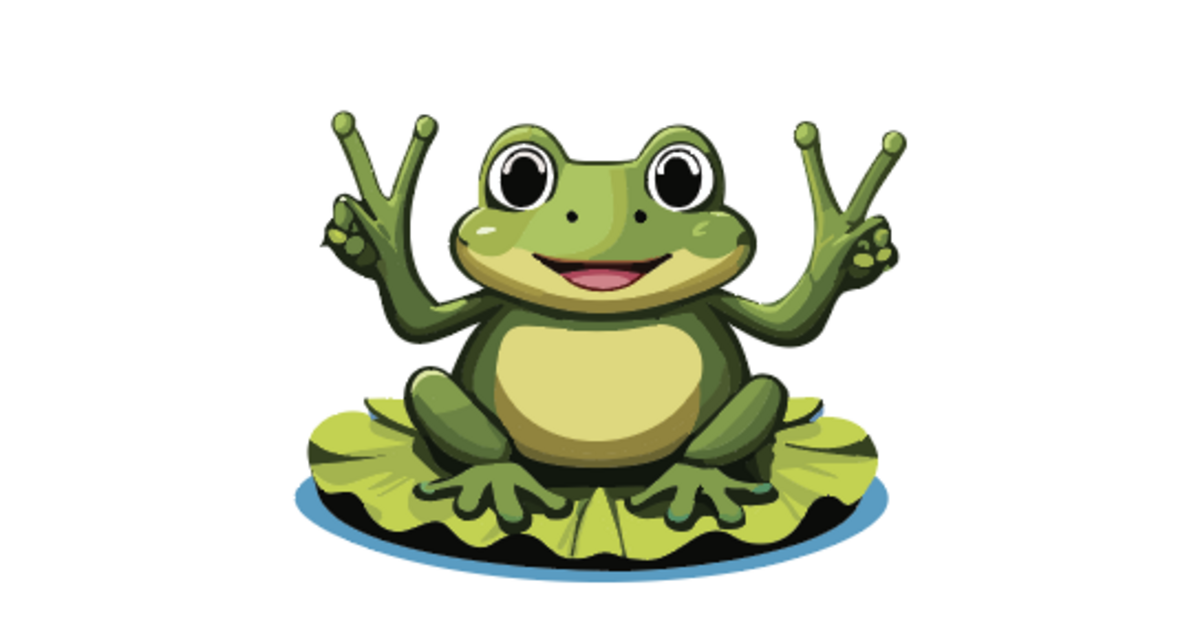Nativa Melo📸Nativa Melo<br>
Model: Nativa Melo<br>
<br>
<br>
<a href="https://pixelfed.social/discover/tags/Photography?src=hash" class="u-url hashtag" rel="nofollow noopener noreferrer" target="_blank">#Photography</a> <a href="https://pixelfed.social/discover/tags/PhotoOfTheDay?src=hash" class="u-url hashtag" rel="nofollow noopener noreferrer" target="_blank">#PhotoOfTheDay</a> <a href="https://pixelfed.social/discover/tags/Pixelfed?src=hash" class="u-url hashtag" rel="nofollow noopener noreferrer" target="_blank">#Pixelfed</a> <a href="https://pixelfed.social/discover/tags/PhotoEditing?src=hash" class="u-url hashtag" rel="nofollow noopener noreferrer" target="_blank">#PhotoEditing</a> <a href="https://pixelfed.social/discover/tags/CreativePhotography?src=hash" class="u-url hashtag" rel="nofollow noopener noreferrer" target="_blank">#CreativePhotography</a> <a href="https://pixelfed.social/discover/tags/LightAndShadow?src=hash" class="u-url hashtag" rel="nofollow noopener noreferrer" target="_blank">#LightAndShadow</a> <a href="https://pixelfed.social/discover/tags/PortraitPhotography?src=hash" class="u-url hashtag" rel="nofollow noopener noreferrer" target="_blank">#PortraitPhotography</a> <a href="https://pixelfed.social/discover/tags/Retouching?src=hash" class="u-url hashtag" rel="nofollow noopener noreferrer" target="_blank">#Retouching</a> <a href="https://pixelfed.social/discover/tags/BeautyPhotography?src=hash" class="u-url hashtag" rel="nofollow noopener noreferrer" target="_blank">#BeautyPhotography</a>
Recent searches
No recent searches
Search options
Only available when logged in.
toad.social is one of the many independent Mastodon servers you can use to participate in the fediverse.

Mastodon server operated by David Troy, a tech pioneer and investigative journalist addressing threats to democracy. Thoughtful participation and discussion welcome.
Administered by:
Server stats:
333active users
toad.social: About · Profiles directory · Privacy policy
Mastodon: About · Get the app · Keyboard shortcuts · View source code · v4.3.8
#retouching
0 posts · 0 participants · 0 posts today
Unofficial PetaPixel Bot<p>LincPlus Studio S1 Tablet Review: An Affordable All-In-One Device for Traveling Creatives <a href="https://petapixel.com/2024/12/23/lincplus-studio-s1-tablet-review-an-affordable-all-in-one-device-for-traveling-creatives/" rel="nofollow noopener noreferrer" translate="no" target="_blank"><span class="invisible">https://</span><span class="ellipsis">petapixel.com/2024/12/23/lincp</span><span class="invisible">lus-studio-s1-tablet-review-an-affordable-all-in-one-device-for-traveling-creatives/</span></a> <a href="https://toot.earth/tags/Technology" class="mention hashtag" rel="nofollow noopener noreferrer" target="_blank">#<span>Technology</span></a> <a href="https://toot.earth/tags/LincStudio" class="mention hashtag" rel="nofollow noopener noreferrer" target="_blank">#<span>LincStudio</span></a> <a href="https://toot.earth/tags/retouching" class="mention hashtag" rel="nofollow noopener noreferrer" target="_blank">#<span>retouching</span></a> <a href="https://toot.earth/tags/Equipment" class="mention hashtag" rel="nofollow noopener noreferrer" target="_blank">#<span>Equipment</span></a> <a href="https://toot.earth/tags/allinone" class="mention hashtag" rel="nofollow noopener noreferrer" target="_blank">#<span>allinone</span></a> <a href="https://toot.earth/tags/computer" class="mention hashtag" rel="nofollow noopener noreferrer" target="_blank">#<span>computer</span></a> <a href="https://toot.earth/tags/LincPLus" class="mention hashtag" rel="nofollow noopener noreferrer" target="_blank">#<span>LincPLus</span></a> <a href="https://toot.earth/tags/Reviews" class="mention hashtag" rel="nofollow noopener noreferrer" target="_blank">#<span>Reviews</span></a> <a href="https://toot.earth/tags/windows" class="mention hashtag" rel="nofollow noopener noreferrer" target="_blank">#<span>windows</span></a> <a href="https://toot.earth/tags/review" class="mention hashtag" rel="nofollow noopener noreferrer" target="_blank">#<span>review</span></a> <a href="https://toot.earth/tags/tablet" class="mention hashtag" rel="nofollow noopener noreferrer" target="_blank">#<span>tablet</span></a> <a href="https://toot.earth/tags/travel" class="mention hashtag" rel="nofollow noopener noreferrer" target="_blank">#<span>travel</span></a> <a href="https://toot.earth/tags/pc" class="mention hashtag" rel="nofollow noopener noreferrer" target="_blank">#<span>pc</span></a></p>
Mika<p>Personally I find <a href="https://photog.social/tags/retouching" class="mention hashtag" rel="nofollow noopener noreferrer" target="_blank">#<span>retouching</span></a> in <a href="https://photog.social/tags/Darktable" class="mention hashtag" rel="nofollow noopener noreferrer" target="_blank">#<span>Darktable</span></a> a <a href="https://photog.social/tags/PITA" class="mention hashtag" rel="nofollow noopener noreferrer" target="_blank">#<span>PITA</span></a>. Big time.</p><p>But today I discovered the Lua-script for engaging <a href="https://photog.social/tags/GIMP" class="mention hashtag" rel="nofollow noopener noreferrer" target="_blank">#<span>GIMP</span></a> from within Darktable. </p><p>It makes this task a breeze.</p><p>It opens GIMP, exports the file to it, you press (for example) C, retouch as needed, overwrite the file (!) from menu, close GIMP. </p><p>The edited file is imported back to Darktable and stacked with the original image. Do with it whatever you want.</p><p>Pure magic! 😮 </p><p>The script does not only work for retouching of course.</p>
Mika<p>Photo-Photo</p><p>Retouching a baryt-print.</p><p><a href="https://photog.social/tags/photography" class="mention hashtag" rel="nofollow noopener noreferrer" target="_blank">#<span>photography</span></a> <a href="https://photog.social/tags/analog" class="mention hashtag" rel="nofollow noopener noreferrer" target="_blank">#<span>analog</span></a> <a href="https://photog.social/tags/portrait" class="mention hashtag" rel="nofollow noopener noreferrer" target="_blank">#<span>portrait</span></a> <a href="https://photog.social/tags/print" class="mention hashtag" rel="nofollow noopener noreferrer" target="_blank">#<span>print</span></a> <a href="https://photog.social/tags/retouching" class="mention hashtag" rel="nofollow noopener noreferrer" target="_blank">#<span>retouching</span></a> <a href="https://photog.social/tags/myphoto" class="mention hashtag" rel="nofollow noopener noreferrer" target="_blank">#<span>myphoto</span></a> <a href="https://photog.social/tags/mywork" class="mention hashtag" rel="nofollow noopener noreferrer" target="_blank">#<span>mywork</span></a> <a href="https://photog.social/tags/filmphotography" class="mention hashtag" rel="nofollow noopener noreferrer" target="_blank">#<span>filmphotography</span></a> <a href="https://photog.social/tags/filmisnotdead" class="mention hashtag" rel="nofollow noopener noreferrer" target="_blank">#<span>filmisnotdead</span></a></p>
Andy<p><a href="https://mastodon.scot/tags/deepfakes" class="mention hashtag" rel="nofollow noopener noreferrer" target="_blank">#<span>deepfakes</span></a> <a href="https://mastodon.scot/tags/deepfakeidentifier" class="mention hashtag" rel="nofollow noopener noreferrer" target="_blank">#<span>deepfakeidentifier</span></a> <a href="https://mastodon.scot/tags/photography" class="mention hashtag" rel="nofollow noopener noreferrer" target="_blank">#<span>photography</span></a> <a href="https://mastodon.scot/tags/AI" class="mention hashtag" rel="nofollow noopener noreferrer" target="_blank">#<span>AI</span></a> <a href="https://mastodon.scot/tags/computers" class="mention hashtag" rel="nofollow noopener noreferrer" target="_blank">#<span>computers</span></a> <a href="https://mastodon.scot/tags/cybersecurity" class="mention hashtag" rel="nofollow noopener noreferrer" target="_blank">#<span>cybersecurity</span></a> <a href="https://mastodon.scot/tags/quiz" class="mention hashtag" rel="nofollow noopener noreferrer" target="_blank">#<span>quiz</span></a> <a href="https://mastodon.scot/tags/deepfake" class="mention hashtag" rel="nofollow noopener noreferrer" target="_blank">#<span>deepfake</span></a> <a href="https://mastodon.scot/tags/fake" class="mention hashtag" rel="nofollow noopener noreferrer" target="_blank">#<span>fake</span></a> <a href="https://mastodon.scot/tags/retouching" class="mention hashtag" rel="nofollow noopener noreferrer" target="_blank">#<span>retouching</span></a> <a href="https://mastodon.scot/tags/AIgenerated" class="mention hashtag" rel="nofollow noopener noreferrer" target="_blank">#<span>AIgenerated</span></a> <a href="https://mastodon.scot/tags/images" class="mention hashtag" rel="nofollow noopener noreferrer" target="_blank">#<span>images</span></a> Now 53 out of 61 correct, and I’m checking them on my phone not a computer.<br>This is a great quiz! <br><a href="https://detectfakes.kellogg.northwestern.edu/" rel="nofollow noopener noreferrer" translate="no" target="_blank"><span class="invisible">https://</span><span class="ellipsis">detectfakes.kellogg.northweste</span><span class="invisible">rn.edu/</span></a></p>
Andy<p><a href="https://mastodon.scot/tags/deepfakes" class="mention hashtag" rel="nofollow noopener noreferrer" target="_blank">#<span>deepfakes</span></a> <a href="https://mastodon.scot/tags/deepfakeidentifier" class="mention hashtag" rel="nofollow noopener noreferrer" target="_blank">#<span>deepfakeidentifier</span></a> <a href="https://mastodon.scot/tags/photography" class="mention hashtag" rel="nofollow noopener noreferrer" target="_blank">#<span>photography</span></a> <a href="https://mastodon.scot/tags/AI" class="mention hashtag" rel="nofollow noopener noreferrer" target="_blank">#<span>AI</span></a> <a href="https://mastodon.scot/tags/computers" class="mention hashtag" rel="nofollow noopener noreferrer" target="_blank">#<span>computers</span></a> <a href="https://mastodon.scot/tags/cybersecurity" class="mention hashtag" rel="nofollow noopener noreferrer" target="_blank">#<span>cybersecurity</span></a> <a href="https://mastodon.scot/tags/quiz" class="mention hashtag" rel="nofollow noopener noreferrer" target="_blank">#<span>quiz</span></a> <a href="https://mastodon.scot/tags/deepfake" class="mention hashtag" rel="nofollow noopener noreferrer" target="_blank">#<span>deepfake</span></a> <a href="https://mastodon.scot/tags/fake" class="mention hashtag" rel="nofollow noopener noreferrer" target="_blank">#<span>fake</span></a> <a href="https://mastodon.scot/tags/retouching" class="mention hashtag" rel="nofollow noopener noreferrer" target="_blank">#<span>retouching</span></a> <a href="https://mastodon.scot/tags/AIgenerated" class="mention hashtag" rel="nofollow noopener noreferrer" target="_blank">#<span>AIgenerated</span></a> I only did 30, but got 26 right, and pressed the wrong button on one which would’ve given me a score of 27. I was 50/50 on 2 images and sadly went the wrong way. It’s late, I’m feeling shattered, and not concentrating too which didn’t help!<br>This is a VERY VERY good quiz though, and it’s helping uni research. Have fun!<br><a href="https://detectfakes.kellogg.northwestern.edu/instructions" rel="nofollow noopener noreferrer" translate="no" target="_blank"><span class="invisible">https://</span><span class="ellipsis">detectfakes.kellogg.northweste</span><span class="invisible">rn.edu/instructions</span></a></p>
Dziadek<p>Kensington Palace has released the original photograph of Kate and her children, before <a href="https://mstdn.social/tags/retouching" class="mention hashtag" rel="nofollow noopener noreferrer" target="_blank">#<span>retouching</span></a> <br><a href="https://mstdn.social/tags/PrincessOfWales" class="mention hashtag" rel="nofollow noopener noreferrer" target="_blank">#<span>PrincessOfWales</span></a></p>
Thomas Beagle<p>And in yet another example of wilfully denying the reality of history - I don't see why those pimples have to appear in the annual family photo book. <a href="https://mastodon.nz/tags/Retouching" class="mention hashtag" rel="nofollow noopener noreferrer" target="_blank">#<span>Retouching</span></a></p>
Pat David<p>Bouncing Baby Beverly, (2011)</p><p>This was afun old image. My daughter literally bursting out of her crib with giddiness and smiles. A belated Fathers Day post. 😀</p><p><a href="https://mastodon.social/tags/photography" class="mention hashtag" rel="nofollow noopener noreferrer" target="_blank">#<span>photography</span></a> <a href="https://mastodon.social/tags/GIMP" class="mention hashtag" rel="nofollow noopener noreferrer" target="_blank">#<span>GIMP</span></a> <a href="https://mastodon.social/tags/retouching" class="mention hashtag" rel="nofollow noopener noreferrer" target="_blank">#<span>retouching</span></a> <a href="https://mastodon.social/tags/composite" class="mention hashtag" rel="nofollow noopener noreferrer" target="_blank">#<span>composite</span></a> <a href="https://mastodon.social/tags/baby" class="mention hashtag" rel="nofollow noopener noreferrer" target="_blank">#<span>baby</span></a></p>
TildalWave (~👋)<p>Someone in my Mastodon feed recently asked, if it's alright to edit photos they take before publishing them? Forgive me for not finding that toot to reply to, but, as a hobbyist photographer myself, I feel compelled to respond regardless;</p><p>The TL;DR answer (applies to most cases): Absolutely!</p><p>The longer answer is, that unless you're trying to demo, review or give opinion of your photographic equipment or editing software, or you're pressed for time and you absolutely have to publish as soon as possible, then it's IMHO basic courtesy towards your readership to at least edit for:</p><p>• intended <a href="https://infosec.exchange/tags/composition" class="mention hashtag" rel="nofollow noopener noreferrer" target="_blank">#<span>composition</span></a> (orientation, aspect ratio & cropping, straightening, perspective correction,...), </p><p>• <a href="https://infosec.exchange/tags/clarity" class="mention hashtag" rel="nofollow noopener noreferrer" target="_blank">#<span>clarity</span></a> (correcting unwanted lens aberrations, adjusting contrast, levels, sharpness, noise reduction,...) and </p><p>• <a href="https://infosec.exchange/tags/colour" class="mention hashtag" rel="nofollow noopener noreferrer" target="_blank">#<span>colour</span></a> (white balance, saturation, hue, tint, vibrance,...). </p><p>How to apply these will depend on the purpose of your photo. If you want to document a scene, keep to minimal editing that will try to match what you saw with your own eyes when taking the photo. And if you want to be artistic and experiment with creative photography, then anything goes (but be bold about it!).</p><p>And once you're happy with those adjustments, also don't forget to consider its dimensions and file size (resolution, compression, file format,...) before uploading it. There's no point in uploading, say, a 24 Mpix image (common sensor size with <a href="https://infosec.exchange/tags/COTS" class="mention hashtag" rel="nofollow noopener noreferrer" target="_blank">#<span>COTS</span></a> <a href="https://infosec.exchange/tags/ILC" class="mention hashtag" rel="nofollow noopener noreferrer" target="_blank">#<span>ILC</span></a> cameras) to a website that will only ever display it at up to <a href="https://infosec.exchange/tags/FullHD" class="mention hashtag" rel="nofollow noopener noreferrer" target="_blank">#<span>FullHD</span></a> resolution. In this case, you'd end up uploading 12 times what's needed. Resized in advance will also render better since it won't go through website's or web browser's rescaler and there's less chance people will "appropriate" your work for their own use without attribution, since they wouldn't have access to more re-publishable, re-editable full resolution version.</p><p>There's a lot of software out there, many of them completely free, that can do all of this more or less acceptably with a single click, then, if you have the time and know-how, you can fiddle with intended look from there onward.</p><p>Additionally, doing this will also force you into reviewing your published materials before posting, so it will prove to be safer. Not everyone needs to know where you live, or be able to read your passwords post-it on your high resolution photo of your pet!</p><p>If you regularly publish photos, you MUST do at least these things described above. Anything else is lazy, sloppy, or careless!</p><p><a href="https://infosec.exchange/tags/Photography" class="mention hashtag" rel="nofollow noopener noreferrer" target="_blank">#<span>Photography</span></a> <a href="https://infosec.exchange/tags/Retouching" class="mention hashtag" rel="nofollow noopener noreferrer" target="_blank">#<span>Retouching</span></a> <a href="https://infosec.exchange/tags/Opinion" class="mention hashtag" rel="nofollow noopener noreferrer" target="_blank">#<span>Opinion</span></a></p>
ExploreLive feeds
Mastodon is the best way to keep up with what's happening.
Follow anyone across the fediverse and see it all in chronological order. No algorithms, ads, or clickbait in sight.
Create accountLoginDrag & drop to upload

